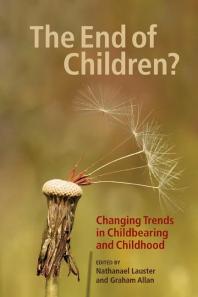

Most ebook files are in PDF format, so you can easily read them using various software such as Foxit Reader or directly on the Google Chrome browser.
Some ebook files are released by publishers in other formats such as .awz, .mobi, .epub, .fb2, etc. You may need to install specific software to read these formats on mobile/PC, such as Calibre.
Please read the tutorial at this link. https://ebooknice.com/page/post?id=faq
We offer FREE conversion to the popular formats you request; however, this may take some time. Therefore, right after payment, please email us, and we will try to provide the service as quickly as possible.
For some exceptional file formats or broken links (if any), please refrain from opening any disputes. Instead, email us first, and we will try to assist within a maximum of 6 hours.
EbookNice Team

Status:
Available4.3
18 reviews
ISBN 10: 0774821949
ISBN 13: 9780774821940
Author: Nathanael Lauster, Graham Allan
Fertility rates have fallen dramatically around the world. In some countries, there are no longer enough children being born to replace adult populations. The disappearance of children is a matter of concern matched only by fears that childhood is becoming too structured or not structured enough, too short or too long, or just simply too different from the idealized childhoods of the past. The End of Children? brings together scholars who draw on their expertise in multiple disciplines – sociology, demography, history, anthropology, family studies, social work, and education – to provide a more balanced, less alarmist perspective on the meanings and implications of these issues. Contrary to predictions of the end of children and the end of childhood, their investigations of developments in Canada and the United States, and to a lesser extent elsewhere in the world, show that fertility rates and ideas about children and childhood are not uniform but rather vary around the globe based on factors such as time, culture, class, income, and age. These timely explorations of how changing ideas about the child are reshaping when and why people have children and how they choose to raise them opens a new dialogue on the production and place of children in modern society.
1 Fertility Change in North America, 1950-2000
2 Changing Children and Changing Cultures: Immigration as a Source of Fertility and the Assumptions
3 Using Infertility, Useful Fertility: Cultural Imperatives on the Value of Children in the United S
4 The Performance of Motherhood and Fertility Decline: A Stage Props Approach
5 Parenthood, Immortality, and the End of Childhood
6 Leaving Home: An Example of the Disappearance of Childhood and Its End as a Predictable Set of Uni
7 The Disappearance of Parents from Children’s Lives: The Cumulative Effects of Child Care, Child
8 Navigating the Pedagogy of Failure: Medicine, Education, and the Disabled Child in English Canada,
9 Pathologizing Childhood
Conclusion: From Children to Child: Ending in China
children
50 cent children
xxxtentacion children
children xs size
children xylophone songs
x men children of the atom
Tags: Nathanael Lauster, Graham Allan, Children, Trends